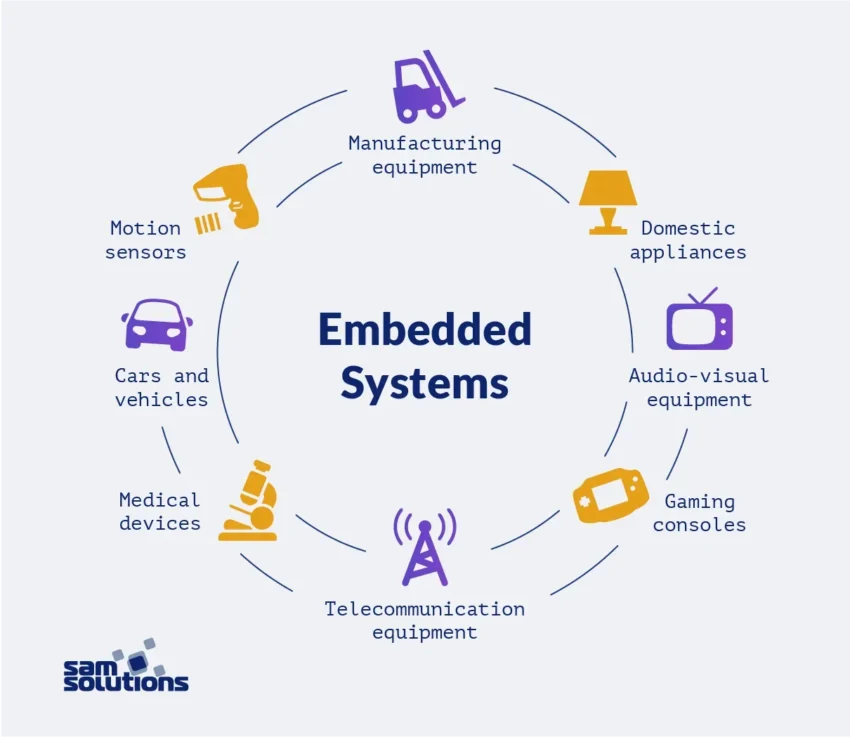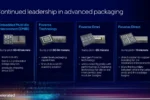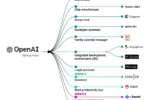Embedded technologies are revolutionizing the way we interact with devices in our daily lives, seamlessly integrating hardware and software to create smart solutions. These advanced embedded systems enable everything from efficient wireless transmission to the deployment of generative AI models, enhancing functionality across various applications. As industries continue to embrace silicon-proven IP and embedded computing design, the demand for innovative solutions is growing exponentially. Whether it’s in consumer electronics, automotive, or healthcare, embedded technologies are at the forefront of driving intelligent automation and connectivity. Welcome to the world of embedded technologies, where the future is being coded today!
When we talk about embedded systems, we refer to the specialized computing components that are integrated within larger devices to perform dedicated functions. These compact systems utilize silicon-proven intellectual property, ensuring reliability and performance in diverse applications, from industrial automation to consumer gadgets. The evolution of wireless transmission technology further enhances the capabilities of these systems, allowing for seamless data exchange and control. Moreover, the advent of generative AI models is pushing the boundaries of what embedded computing can achieve, enabling smarter and more adaptive devices. In this dynamic landscape, embedded technologies are not just a trend; they are the building blocks of tomorrow’s innovations.
Innovations in Embedded Technologies
Embedded technologies are rapidly evolving, enabling engineers and developers to design more efficient and robust systems. The recent acquisition of Secure-IC by Cadence exemplifies this trend, as it enhances their portfolio of silicon-proven IP. This includes advanced solutions for AI/ML and DSP, which are crucial for developing next-generation embedded systems. The integration of these technologies streamlines the design process, allowing for quicker deployment and improved performance in embedded computing applications.
Moreover, the continuous innovation in embedded technologies is pushing the boundaries of what is possible in the industry. The synergy between hardware and software is vital, especially as we see an increase in the complexity of applications ranging from industrial automation to consumer electronics. Engineers must stay updated on these developments to leverage the latest tools and frameworks, ensuring their designs are competitive and capable of meeting modern demands.
Wireless Transmission: A Game Changer for Embedded Systems
The introduction of TDK’s Acoustic Data Link technology marks a significant breakthrough in wireless transmission capabilities, particularly for embedded systems. This technology allows for the efficient transfer of power and data through metal, addressing previous limitations related to energy loss and data degradation. As embedded systems increasingly require robust communication methods, this advancement opens the door to innovative applications that were previously deemed impractical.
Applications such as wireless sensor operation in metal shielded housings and monitoring in pressurized vessels showcase the potential of this wireless transmission technology. For embedded systems designers, these advancements mean greater versatility in deploying sensors and data monitoring solutions in challenging environments. It is crucial for developers to explore how such innovations can be integrated into their projects, ultimately leading to enhanced performance and reliability.
Generative AI Models and Embedded Computing Design
The emergence of generative AI models has revolutionized embedded computing design, with Syslogic’s RSA4NA rugged computer being a prime example. Powered by the NVIDIA Jetson Orin Nano, this system is tailored for high-performance applications that require advanced AI capabilities. As generative AI continues to evolve, embedding these models into computing systems will enable unprecedented levels of automation and efficiency, transforming the way embedded systems are utilized across various industries.
Furthermore, the flexibility of the RSA4NA, including its IP67 and IP69 ratings, demonstrates the importance of rugged designs in embedded computing. This capability ensures that the system can operate in harsh conditions while maintaining the performance required for generative AI applications. Engineers and developers must focus on integrating generative AI into their designs, as it will play a pivotal role in shaping the future of embedded technologies.
The Role of Silicon-Proven IP in Embedded Systems
Silicon-proven IP is critical for embedded systems as it provides a reliable foundation for design and development. With the acquisition of Secure-IC by Cadence, the range of available silicon-proven IP has expanded, offering engineers access to cutting-edge solutions that enhance their projects. This includes components specifically designed for AI/ML applications, which are becoming increasingly important in modern embedded systems.
Utilizing silicon-proven IP reduces the risk associated with design errors, allowing for faster time-to-market and increased confidence in system performance. As embedded systems continue to evolve, the reliance on robust and tested IP will become even more significant, enabling developers to create innovative solutions that meet the demands of today’s market.
Exploring Applications of Wireless Sensor Technologies
Wireless sensor technologies are transforming the landscape of embedded systems, enabling new applications that enhance operational efficiency and monitoring capabilities. TDK’s Acoustic Data Link technology is a prime example, as it facilitates communication and data transfer in environments where traditional RF signals struggle. This innovation opens up opportunities in sectors such as biotechnology, pharmaceuticals, and chemical processing, where sensor operation in metal shielded environments is often necessary.
Moreover, the ability to effectively monitor data in pressurized vessels and through metal walls presents significant advantages for industries relying on accurate real-time data. As embedded systems continue to integrate these wireless sensor technologies, developers can create more sophisticated monitoring solutions, leading to improved safety and performance across various applications.
Advancements in Rugged Embedded Computing Solutions
The demand for rugged embedded computing solutions is on the rise, especially in industries that operate in extreme conditions. Syslogic’s RSA4NA, designed for harsh environments, exemplifies the growing trend of creating durable systems that can withstand moisture, dust, and temperature fluctuations. This focus on ruggedness is essential for applications such as autonomous vehicles and industrial automation, where reliability is critical.
As embedded computing design continues to evolve, engineers must prioritize the development of systems that can endure challenging conditions. By integrating robust components and ensuring proper shielding, developers can enhance the performance and longevity of their embedded systems, ultimately leading to greater customer satisfaction and trust in the technology.
Navigating the Future of Embedded Technologies
The future of embedded technologies is bright, with numerous advancements on the horizon. As we witness the convergence of AI, IoT, and advanced wireless communication, embedded systems will play an increasingly vital role in various sectors. Engineers and developers must stay informed about emerging technologies and trends to effectively navigate this dynamic landscape and leverage new opportunities for innovation.
Moreover, participation in industry events such as Embedded World provides invaluable insights into the latest developments in embedded technologies. These gatherings foster collaboration and knowledge sharing among professionals, helping to drive the industry forward. By actively engaging in these conversations, developers can gain a competitive edge and ensure their designs remain at the forefront of technological advancements.
The Significance of In Case You Missed It Newsletters
The In Case You Missed It newsletter serves as a crucial resource for embedded engineers and developers, providing timely updates on the latest trends and technologies in the industry. As the landscape of embedded systems continues to evolve, staying informed through such newsletters is essential for professionals looking to maintain their competitive edge. Each edition highlights advancements in embedded technologies, from silicon-proven IP to the latest in wireless transmission.
Additionally, the newsletter’s focus on industry events and key stories ensures that readers are always in the loop about significant developments. By subscribing and engaging with these insights, embedded engineers can enhance their understanding of market shifts and technological advancements, ultimately benefiting their projects and career growth.
Connecting with Embedded Community through Social Media
In today’s digital age, social media platforms have become vital tools for connecting with the embedded community. Following industry leaders and organizations on platforms like LinkedIn and Twitter allows engineers and developers to stay updated on the latest news, trends, and innovations in embedded technologies. Engaging with these communities fosters collaboration and knowledge sharing, which are essential for professional growth.
Moreover, social media serves as an excellent platform for promoting one’s work and projects within the embedded systems field. By sharing insights and participating in discussions, engineers can showcase their expertise and connect with like-minded professionals, leading to potential collaborations and career opportunities. Embracing social media is key for anyone looking to thrive in the ever-evolving embedded technology landscape.
Advertising Opportunities in Embedded Technologies
With the rapid growth of the embedded technologies sector, advertising opportunities have become increasingly valuable for businesses looking to reach a targeted audience. Platforms like In Case You Missed It provide an ideal venue for companies to showcase their products and services, ensuring maximum visibility within the embedded community. By leveraging these advertising opportunities, organizations can connect with engineers and developers who are actively seeking innovative solutions.
Furthermore, effective advertising strategies that highlight the unique selling points of embedded technologies can significantly enhance brand recognition and customer engagement. As the industry becomes more competitive, businesses must invest in reaching their audience through targeted advertising campaigns that resonate with their needs and interests. This approach not only drives sales but also fosters long-term relationships with customers.
Frequently Asked Questions
What are embedded systems and how do they integrate with silicon-proven IP?
Embedded systems are specialized computing systems that perform dedicated functions within larger mechanical or electrical systems. They often utilize silicon-proven IP (Intellectual Property) to enhance their functionality and reliability. This IP includes pre-designed components that can be integrated into embedded computing designs, streamlining development and ensuring high performance.
How does wireless transmission benefit embedded technologies?
Wireless transmission is crucial for embedded technologies as it enables seamless communication without physical connections. This is particularly beneficial in embedded systems used in remote monitoring applications, where traditional wired connections may be impractical. Innovations like TDK’s Acoustic Data Link technology improve wireless transmission capabilities, reducing energy loss and enhancing data integrity, making them ideal for embedded systems.
What role do generative AI models play in embedded computing design?
Generative AI models are increasingly being integrated into embedded computing designs to enhance processing capabilities and enable advanced functionalities. For instance, rugged computers like the RSA4NA leverage generative AI models to optimize operations in challenging environments, thereby improving efficiency and performance in embedded applications.
What challenges do embedded systems face with wireless transmission?
Embedded systems often encounter challenges with wireless transmission, such as data degradation and energy loss, especially when operating in environments with metal shielding. Innovations in wireless technologies, like TDK’s solutions, aim to address these issues, allowing for reliable data communication even in challenging conditions.
Why is silicon-proven IP important for embedded engineers?
Silicon-proven IP is essential for embedded engineers as it provides verified, reusable components that enhance design efficiency and reliability. By integrating silicon-proven IP into their embedded systems, engineers can reduce development time and costs while ensuring high-quality performance in their applications.
How do rugged embedded systems support extreme environmental conditions?
Rugged embedded systems, such as those featuring the NVIDIA Jetson Orin Nano, are designed to withstand extreme environmental conditions, including temperature ranges from -40 to +70 degrees Celsius. With features like IP67 and IP69 ratings for moisture and dust resistance, these systems are ideal for applications in harsh environments, ensuring reliability and durability.
What are some applications of wireless sensor operation in embedded systems?
Wireless sensor operation in embedded systems can be applied in various fields, including biotech, pharmaceuticals, and chemical industries. Technologies like TDK’s Acoustic Data Link facilitate wireless communication in metal-shielded housings, enabling effective monitoring and control in pressurized vessels and other challenging environments.
What advancements are being made in embedded computing design with AI technologies?
Recent advancements in embedded computing design include the incorporation of AI technologies that enhance processing power and efficiency. Systems like the RSA4NA utilize generative AI models to unlock new capabilities, allowing for sophisticated applications in real-time data processing and analytics, which are crucial for modern embedded systems.
| Date | Company/Technology | Key Points |
|---|---|---|
| January 31, 2025 | Cadence | Acquires Secure-IC to enhance silicon-proven IP solutions including AI/ML, DSP and more. |
| January 31, 2025 | TDK | Showcased Acoustic Data Link technology for wireless data/power transmission through metal, suitable for various applications. |
| January 31, 2025 | Syslogic | Released RSA4NA rugged computer based on NVIDIA Jetson Orin Nano, enhancing generative AI models with a robust design. |
Summary
Embedded technologies are revolutionizing the way devices communicate and function, as illustrated by recent developments in the sector. This week, highlights include Cadence’s acquisition of Secure-IC for enhanced IP solutions, TDK’s innovative Acoustic Data Link for wireless transmission through metal, and Syslogic’s rugged RSA4NA computer that supports generative AI applications. These advancements not only underscore the continuous evolution within embedded systems but also pave the way for new applications and efficiencies across industries.






